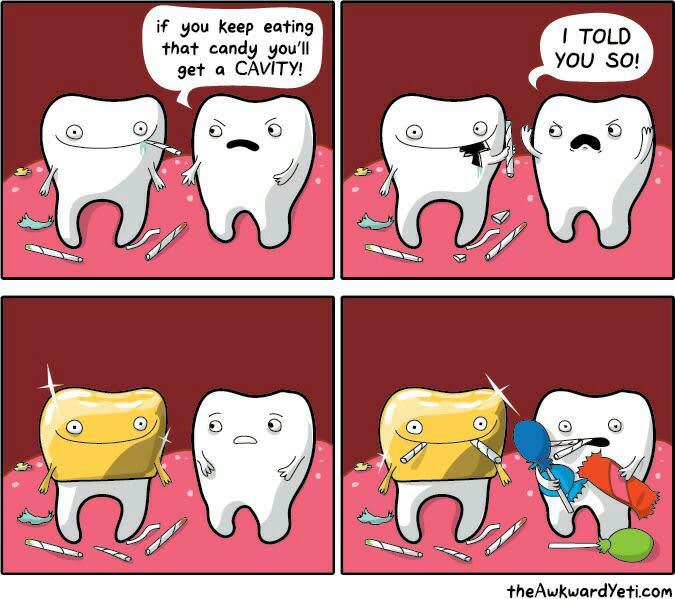There are 4 methods to detect decay, and the best method depends on the exact location of the cavity and also the stage of decay. Essentially, large cavities are easier to detect but are more complicated to treat.
1) Visual
This is done by scanning your teeth surfaces that have been dried and observing colour or textural changes. This is routinely done during all dental examinations. Detection of cavities is improved with good light and magnification (using loupes or even a microscope).
This is the cheapest and fastest method but it may not be able to detect early decay in the proximal areas (in between the teeth) or under the gumline.
2) Radiographic (using xrays)
High resolution dental xrays taken with the film held inside the mouth allow dentists to check proximal areas and under old fillings or crowns for decay. Xrays can show decay that is in the early stages (painless and symptomless).
Your dentist may choose to monitor these early decay spots and intervene only if there are signs that the decay is getting worse. High concentration fluoride may be able to stop the decay from progressing if applied every 3 months.
3) Transillumination
A strong narrow beam of light is shone in the proximal area where 2 teeth meet and a cavity will show up as a shadow. This is best confirmed with an xray and can be useful for detecting cracks.
4) Laser fluorescence
A specific laser-emitting instrument emits and reads light wavelengths that interact with the tooth surface and subsurface. Areas with decay give off a different reading (usually seen as a colour or a shadow, depending on the exact instrument used) from healthy tooth tissue.
This instrument is not widely available and the readings are not 100% foolproof.
The decision to monitor or treat decay depends on patient risk factors and the experience of the operator. If you change dentist frequently, it can be hard to know if your decay problem has been brought under control. Patients who change dentist frequently are also tend to get their fillings changed more frequently as well!
Your sensitivity to cold may be due to dentine hypersensitivity from exposed root surfaces (if you have areas of gum recession). I would encourage you to return to your dentist and ask to look for potential sources of your symptoms.




